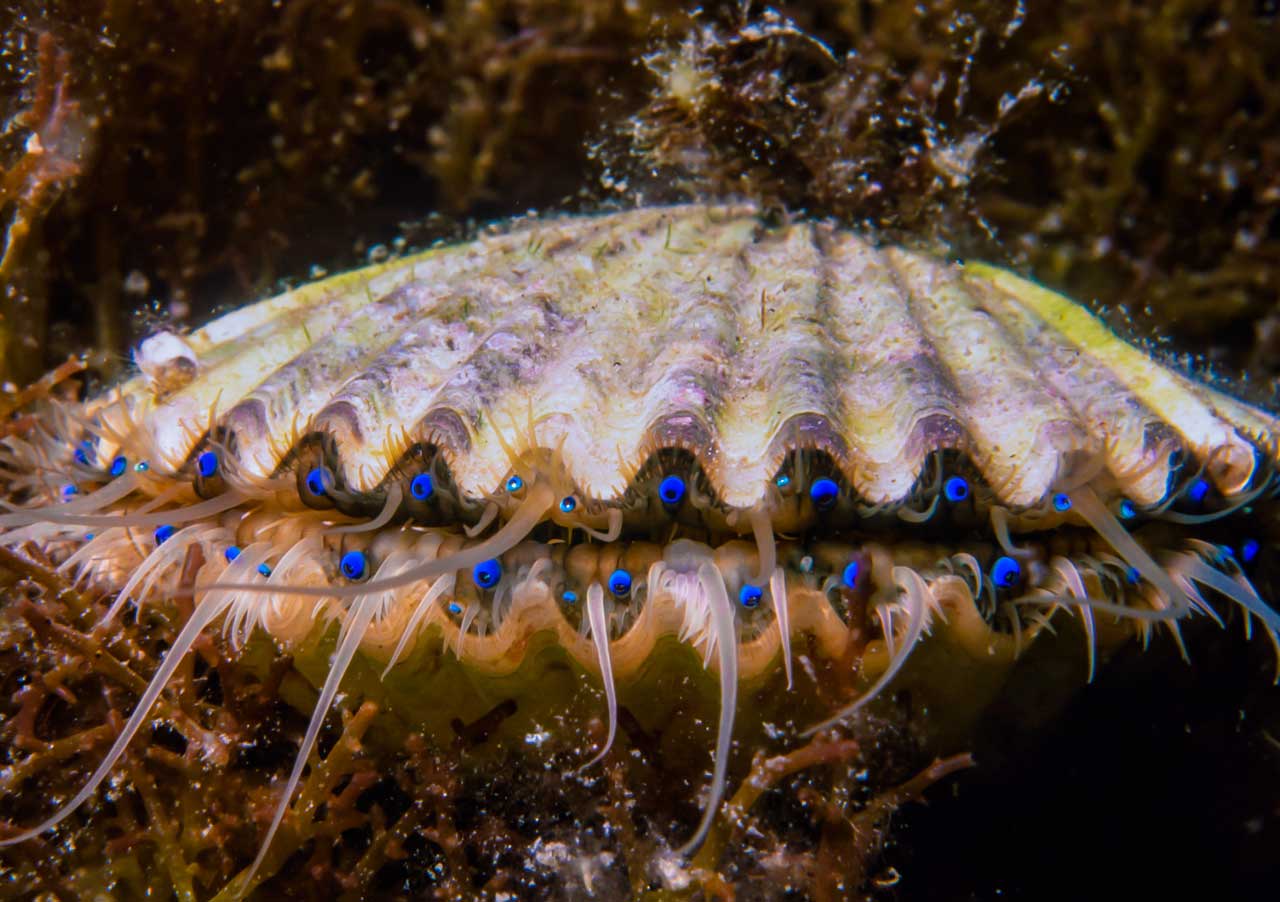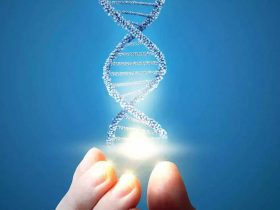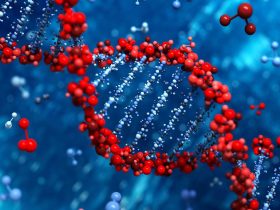Who knew, right? Scallops have eyes? Well, believe it or not, they do. And not just any eyes, but eyes with space-age technology. If you look hard at the eye of the scallop, you will see the magnificence of God.
Next year NASA hopes to launch the James Webb Space Telescope, to study the universe through infrared light. James Webb will use an array of 18 hexagonal mirrors, each focusing light to a single sensor. This array, or grid, technology is used in today’s largest and newest telescopes, and now NASA intends to launch one into space.
Scallops have dozens of eyes; one species has up to 200, most of which are neon blue. Each eye reflects light using mirrors made up of – ready? – a grid of crystals. Here’s one description:
The mirror consists of flat, square guanine crystals, each a millionth of a meter wide. They tessellate together into a chessboard-like grid. Between 20 and 30 of these grids then stack on top of each other, with a liquid-filled gap between them. And the layers are arranged so that the squares in each one lie directly beneath the squares in the one above. The crystals and the gaps between them are respectively 74 and 86 billionths of a meter thick, and these exacting distances mean that the mirror as a whole is great at reflecting blue-green light—the color that dominates the scallop’s underwater habitat.
This type of crystal – made of guanine (one of the “letters” of DNA) – normally grows in prisms, not flat squares. The scallop has to shape each crystal into a flat square with exactly the right dimensions. The crystals are not inanimate objects; they are within living cells. The cells then communicate with each other to “tessellate” into the exact perfect grid for the scallop to see, and the grids somehow know how to stack up 20 or 30 deep exactly on top of each other with exactly the right distance between them.
This amazing recent discovery is worth repeating. Special cells contain a crystal with precise dimensions. These cells communicate to form precise grids, and the grids know how to stack up, precisely aligned on top of each other, 20 to 30 layers deep.
Scallops have two retinas, or light detection areas. The mirror is tilted a bit relative to the retinas, so that it projects “light from the center of the animal’s visual field onto the upper retina, and light from the periphery onto the lower one.”
Scallops can see tiny particles. Scientists don’t know how the signals from the dozens of eyes are combined, but somehow the brain of the scallop has the ability to process dozens of images, up to two hundred separate signals, and see clearly.
Get the picture? Space-age technology using a complex grid mirror perfectly designed to see through blue-green light, that focuses simultaneously on things in the center of the field of vision and on the periphery, and then combines the signals. As The Atlantic, which is not a religious magazine, gushed, “the whole structure is a master class in precision engineering.”
Amen! But then, sadly, the magazine attributes this precision engineering to “the evolutionary process,” by which they mean it formed according to Darwin’s theory of keeping the best mistakes. There is no “search” button in Darwinian evolution; change only comes through random mutations, 99.99% percent of which are harmful or at best neutral.
We are supposed to believe you can get “a master class in precision engineering” from random mutations? This structure is irreducibly complex. Without all the pieces, put together just right, it won’t work. It’s like a mousetrap, only much more complex. It couldn’t have arisen by chance.
Compare the two systems. First is NASA’s new telescope, with one grid mirror and a single detection area. Second is the eye of the scallop with 20 to 30 grid mirrors precisely aligned one on top of other, focusing light into two detection areas, and a brain that combines the signals from up to 200 of these eyes. We know the James Webb Space Telescope was designed. Beyond doubt, the eye of the scallop was designed.
The theory of intelligent design, that God designed every living creature, predicts we will find complex structures in living creatures. The eye of the scallop is proof of God. As St. Paul wrote almost 2,000 years ago:
For the wrath of God is revealed from heaven against all ungodliness and unrighteousness of men, who by their unrighteousness suppress the truth. For what can be known about God is plain to them, because God has shown it to them. For his invisible attributes, namely, his eternal power and divine nature, have been clearly perceived, ever since the creation of the world, in the things that have been made. So they are without excuse.
Romans 1:19-20, with emphasis added. In the things that have been made, we see God. And those who deny it are without excuse.
Thanks for reading. Please share the good news that science proves the existence of God. Together we can overcome the sad Atheist paradigm that life is meaningless. Together we can restore hope. Together we can change the world.
Doug Ell

















Leave a Reply